The dance of empowerment
Sheema Kermani reflects on the profound potential of dance as a tool for education and societal change
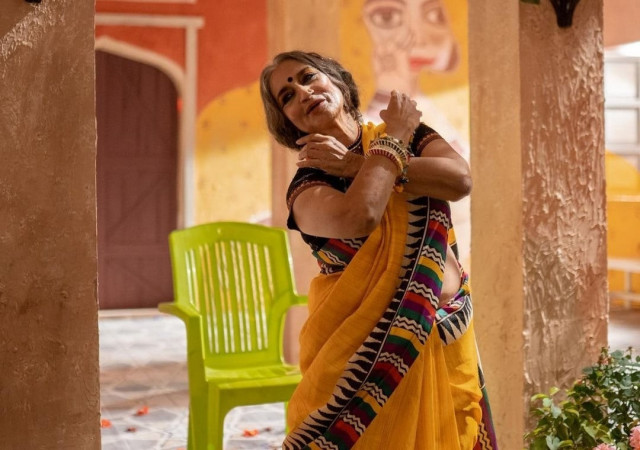
Within Pakistan’s rich and diverse artistic landscape, one name stands synonymous with both dance and women’s empowerment. Seamlessly blending her prowess as a classical dancer with an unwavering dedication to advocating women's rights, her journey, marked by passion and resilience, has transcended boundaries, shaping the artistic spaces of Karachi and beyond.
In a recent conversation, Kermani delved into the profound significance of dance in Pakistani culture, sharing her thoughts and concerns on the trajectory of the art form in the country. In her vision for the future, dance and theatre could be a potent tool for education and societal change, challenging norms and fostering equality in male-female relationships.
MY: What is the importance of dance in Pakistani culture? What art its benefits for our society?
SK: Dance is an integral aspect of the culture of any people and any society. Pakistan lies in the heart of the great Indus Valley Civilisation where the historic cities of Mohenjodaro, Harappa and Taxila existed. We derive our cultural heritage from these ancient times, from this rich civilisation and dance and music and the poetics of Sufi culture have always been blowing in the wind. Many of the artefacts found from the ruins of these great cities provide evidence and relate the connections and relationships of the people with these arts.
I think today dance can play a vital role especially for women in our society. It helps us to understand the whole issue of a woman’s body and how it is looked upon? The taboos linked to it – these are important and integral aspects of the problems we face in our everyday lives. As soon as a girl starts growing up she is told to feel ashamed of and hide her body- through dance we learn to straighten and strengthen our spine- hold our shoulders back, this instills a confidence and a feeling of dignity and empowers the woman.
Besides this we know that modern medicine looks at dance as a therapy for the depressed person as it promotes good hormones that help to make one not only cheerful and expressive but also extremely confident. Dance provides relaxation, focus, concentration and body-mind co-ordination. Our physical strength increases as soon as we begin to believe we are strong and have confidence in our muscles; our emotional and intellectual strength increases when we allow this power/passion to reside in our mind and find a form in 'Thought''. Thought can create health and healing, can make things happen, can create events and circumstances. Thought can alter reality; thought can create reality. Thought is empowered by intensity. Passion is power, and the necessary active ingredient for a healthy mind and body.
MY: How has dance evolved and progressed in Pakistan?
SK: I don’t think that dance in Pakistan has actually evolved at all. In fact, it has degenerated and at present there is hardly any dance that we can talk about. Of course, you must realise that when I talk about dance I am looking at the status of classical dance in our country and not at the modern, pop or filmi style of dance that is perhaps popular here. For me dance is an art form and this particular art form is dying in Pakistan.
MY: What sort of mindset should a student and proponent of dance possess? How do they go about motivating themselves?
SK: Basically, it's about deciding what you want to do with your life. As for myself - I don’t feel that I would be happy unless I am creating artistic work and performing. I decided that I would rather do things that make me happy, it is dance and theatre that gives me happiness, so I decided that this is what I will do. Yes, there have been some very difficult times.... even today to be a dancer in this country is very tough but it is one’s passion that gives one the energy to go on>
MY: How do you view the narrative potential of dance as an art form?
SK: I think all art is a reflection of society, of its values and its life, and if an artist is an aware and thinking being then she or he cannot possibly be cut off from contemporary concerns – these concerns are then reflected in the work because they are part of the life of the artist. So, my stories reflect my concerns of a woman living in this society – the concerns are of equality, of dignity, of all kinds of freedoms, and most of all my stories are a plea for justice for all- for a society based on love and peace.
MY: Your art has been inseparable from your activism for women’s rights. How do you reconcile both these roles?
SK: My main concern has been to try and integrate art and politics with especial emphasis on women’s rights. In a society where there is conflict, art, if it is truthful, must also reflect the conflict and the decay. It must show the world as changeable. And help to change it. Whenever Tehrik-e-Niswan sets out to produce a work of art, be it dance or drama, this world outlook, this ideology and a highly conscious rational process is kept in mind. The work of bringing about a change in people’s thinking and behaviour through cultural interventions is very different from all other material development work. It is a process of changing minds and values, which works in imperceptible ways and is very difficult to say actually at what point and in which manner cultural experiences affect people. The proof of its effectiveness lies in the undeniable fact that our mental attitudes are formed by the songs that we have heard, the plays or films we have seen, the poems or stories that we have read or been told.
MY: How do classical dance forms link with Pakistan’s culture and societal needs?
SK: Art tells the truth and for me art is secular. Dance is the ultimate truth, it is within us - so many of the great Sufis of this land were dancers themselves, they whirled and sang about their love with nature and with the divine.
MY: Can you elaborate on the education potential of art and dance? How can it effect positive change?
SK: I think theatrical arts can definitely become an alternative means of education. They should also be part of the educational system. Arts can become an alternative form of education if performances are taken to the people and done in areas where people don’t get to see theatre. Through the means of theatre one can educate and raise awareness. The basic idea is to change people's values, to make them think of alternative situations, why they are succumbing to the norm and not thinking of other alternatives, where life can be different, where husbands can treat their wives in a better way, where on the road women can have a better chance to walk alone and not be harassed. So, basically you can give them these images, these ideas. Yes, here I am talking about a long-term vision. To change people's ideas, to change people's thinking is by itself a very long and slow process, but it has to be done.
MY: Activism and humanitarian work can seem like an uphill battle. What keeps you going on?
SK: What keeps me going is my belief that what I am doing is the only truth that I know and I do my best to keep that moving forward. This is what keeps me alive.
Murad Yusufzai is a freelance contributor
All facts and information are the sole responsibility of the author

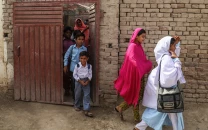
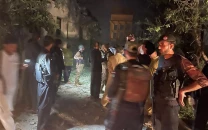
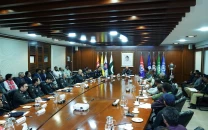

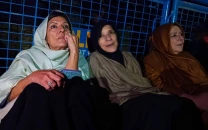













COMMENTS
Comments are moderated and generally will be posted if they are on-topic and not abusive.
For more information, please see our Comments FAQ